I’ve seen it firsthand: a talented team falling short of reaching its potential due to unclear roles, outdated skills, or lack of direction. It’s frustrating, isn’t it? Employee training can be an antidote here.
With years of experience in corporate training solutions, I can tell you that effective employee training and development turns challenges into opportunities. It’s the key to boosting productivity, improving retention, and staying competitive. In fact, 43% of companies report increased revenue since implementing an education program.
Ready to transform your workforce into a well-oiled machine through purpose-driven initiatives? Keeping reading to find out how to go about it.
What Is Employee Training & Development?
Employee training and development refers to developing general and role-based knowledge and skills in employees to help them perform their duties effectively.
Such training programs are often tied to:
- Improved employee performance
- Better decision-making
- Achievement of business objectives
- Adherence to industry standards
Employers use various methods for staff training, including classroom training, eLearning, role-plays, webinars, group discussions, and more.
Pro Tip: To achieve positive results, make employee training and development programs engaging, flexible, measurable, and consistent.
Why Is Employee Training Important?
Employee training plays a critical role in shaping a competitive and efficient workforce. Beyond skill enhancement, it ensures a motivated and committed team ready to adapt to evolving industry demands. Here are the key reasons that explain the importance of employee training:
- Bridges Knowledge Gaps
Training empowers employees with the skills they need to excel, ensures consistency in performance, and bridges skill gaps in professional expertise. According to a study, 94% would stay at a company longer if it provided opportunities to learn and grow. - Boosts Employee Retention
A well-trained workforce feels valued and supported, which reduces turnover. Employees who see opportunities for growth within their roles are more likely to stay. - Improves Productivity
Trained employees perform tasks more efficiently, which directly impacts organizational output and enhances customer satisfaction. When employees receive the training they need (and want), companies are 17% more productive. - Enhances Work Quality
Proper staff training minimizes errors and increases the quality of deliverables. Employees can tackle challenges with confidence, which leads to reliable and consistent outcomes. - Drives Customer Satisfaction
A knowledgeable team delivers superior service that fosters loyalty and encourages repeat business. Satisfied customers often turn into advocates for your brand. - Reduces Long-term Costs
While training involves initial investment, it prevents high turnover and rework costs, making it a financially sound strategy for sustainable growth.
Kuwaiti Danish Dairy Company (KDD) cut training costs drastically using ProProfs LMS. Their diverse workforce benefited from custom courses and in-person sessions, including employees without internet access. With ProProfs, they avoided expensive international training and streamlined the process. Training became efficient, and quizzes made learning more engaging. KDD now delivers high-quality training at employees’ desks, saving time and money.
- Cultivates a Learning Culture
Organizations that prioritize training foster innovation and adaptability. A culture of learning ensures readiness to face new challenges and seize opportunities.
Get Free Employee Training Software — All Features, Forever.
We've helped 567 companies train 200,000+ employees. Create courses in under a minute with our AI LMS or use 200+ ready-made courses on compliance, harassment, DEI, onboarding, and more!
What Are the Benefits of Employee Training and Development?
Staff training and development provide significant benefits to both employees and organizations. Here’s how:
Benefits for Employees
Employees who receive regular learning opportunities tend to be more satisfied, which has a cascading effect on all other aspects of their profession.
- Enhanced knowledge and skills
- Career development and growth opportunities
- Increased job satisfaction
- Improved confidence and motivation
- Increased competency in handling challenges
- Better adaptability in dynamic work environments
- Personal and professional growth
- Higher chances of promotions and salary raises
- Improved work-life balance
- Increased job security
Benefits for Organizations
Many employers still don’t invest in their employees’ ongoing formal training. By doing so, they are making a costly mistake. Don’t be one of them. Here are some significant benefits of staff training to organizations that will make you rethink.
- Increased productivity and performance
- Competitive advantage
- Reduced employee turnover
- Enhanced innovation and creativity
- Effective succession planning
- Improved employee engagement and retention
- Alignment with organizational goals and objectives
- Effective risk management
- Enhanced organizational reputation
- Compliance with industry regulations
Employee Training Examples
There are various types of staff training and development programs. Here are the 12 most common types of employee training programs:
1. Onboarding Training
Onboarding training is the process of integrating new employees into an organization and providing them with the necessary knowledge and skills to perform their job duties effectively. It starts with orientation and covers other activities, such as HR paperwork, training on company policies and culture, facility tours, introductions to team members, and role-based training.
Benefits: Onboarding training accelerates employee productivity by helping them adapt quickly to company culture and expectations. It boosts retention rates by fostering a sense of belonging and engagement from day one.
2. Technical Skills Training
Technical training imparts the knowledge and skills necessary to succeed in technical fields. Its primary goal is to equip individuals with the competencies to perform specific technical tasks or functions within a given industry. In other words, it involves training on a job’s technical aspects.
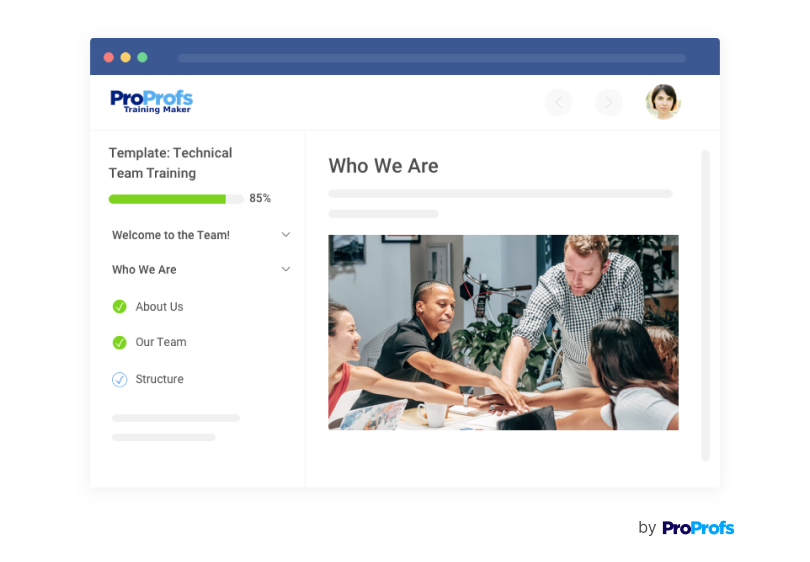
Benefits: Technical training enhances problem-solving skills and boosts productivity. It equips employees with the latest skills, driving innovation and business growth.
3. Soft Skills Training
Soft skills training focuses on developing and enhancing non-technical skills. These skills include communication, teamwork, problem-solving, time management, leadership, adaptability, emotional intelligence, and conflict resolution. The goal is to develop well-rounded professionals who can effectively navigate the challenges of interpersonal relationships.
Here’s a course that will help your employees build their interpersonal skills:
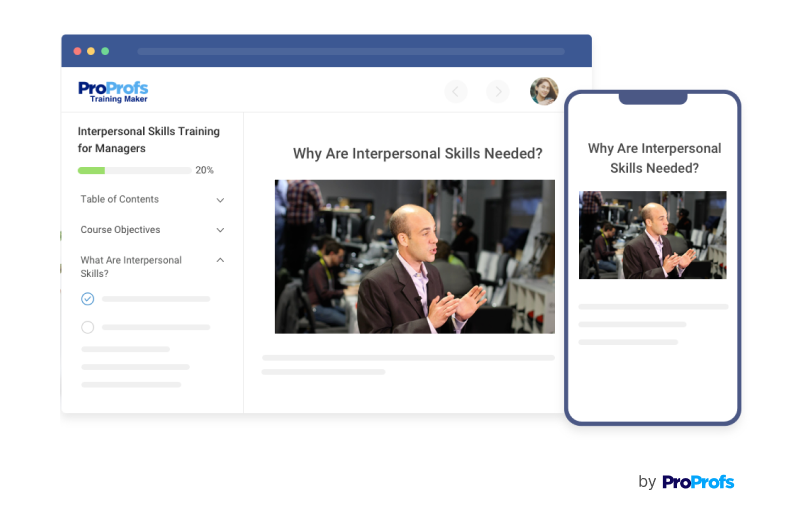
Benefits: Soft skills training improves communication and teamwork. It fosters leadership qualities and enhances emotional intelligence in the workplace.
4. Product or Customer Service Training
Product or customer service training aims to enhance employees’ understanding of an organization’s products or services and the skills to communicate their values to clients effectively. The training ensures that professionals can effectively communicate, build trust, and instill confidence in customer relationships vis-a-vis a business’ offerings.
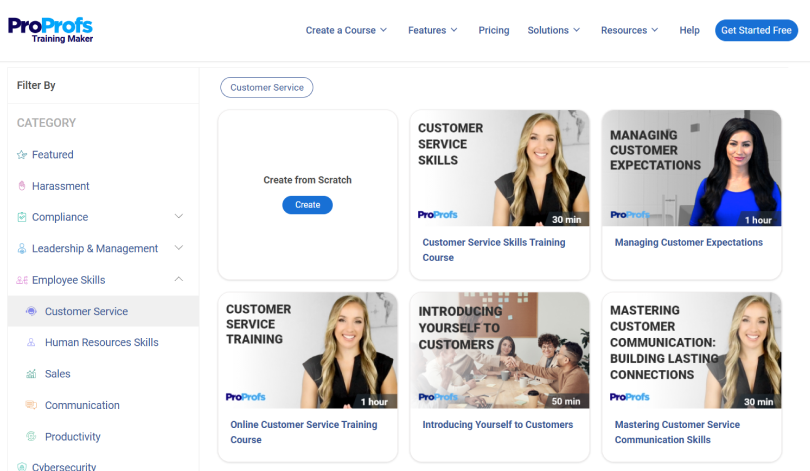
Benefits: Product training improves customer satisfaction by ensuring better product knowledge. It increases sales effectiveness and enhances brand loyalty through expert understanding.
5. Compliance Training
Compliance training ensures that employees know and adhere to all applicable laws, regulations, and policies that govern their organization’s operations. Such training is essential as it helps minimize the risk of legal and financial consequences for organizations. The training can cover a range of employee training topics, such as:
- workplace safety
- anti-discrimination
- Sexual harassment prevention
- ethics training
- general data protection regulation
- phishing awareness
- financial regulations
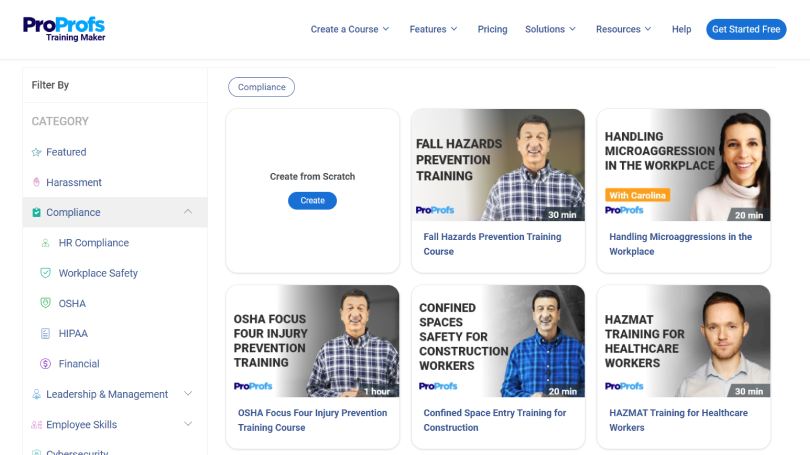
Benefits: Compliance training reduces legal risks and ensures adherence to regulations. It fosters a culture of accountability and trust within the organization.
Pro tip: Use compliance training software to create and deliver customized training modules, track employee progress and completion, and maintain training records. Such solutions also provide automated reminders and notifications to ensure that training is completed on time.
6. Sexual Harassment Training
Sexual harassment training is one of the essential and mandated employee training programs. It aims to educate employees on what constitutes sexual harassment in the workplace, how to prevent it, how to respond to incidents and the legal and ethical implications.
Here are a few courses you can consider for your learners:

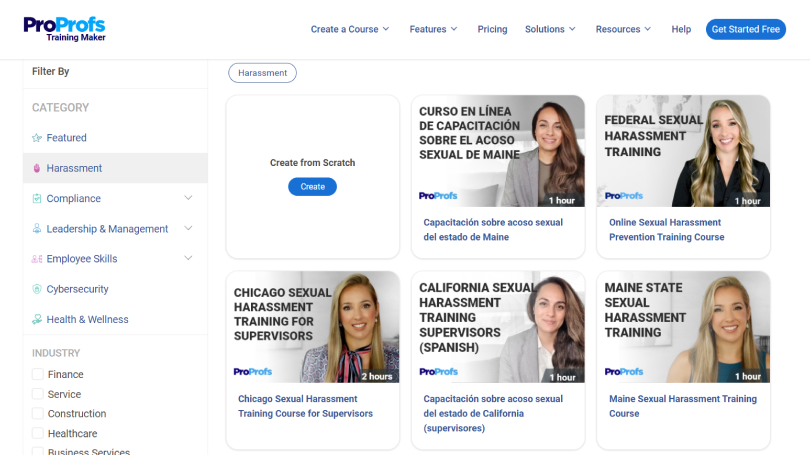
Benefits: Sexual harassment training promotes a safer work environment by raising awareness and preventing inappropriate behavior. It empowers employees to recognize, report, and address harassment, fostering respect and inclusivity.
Pro tip: When developing a sexual harassment training program, go beyond addressing legal compliance and focus on changing workplace culture. Ensure employees understand the importance of respect, consent, and bystander intervention, and create opportunities for open dialogue.
7. Safety Training
Safety training promotes employees’ safety and well-being in the workplace. It educates them on safety practices and procedures that should be followed to prevent workplace accidents, injuries, illnesses, and even fatalities.
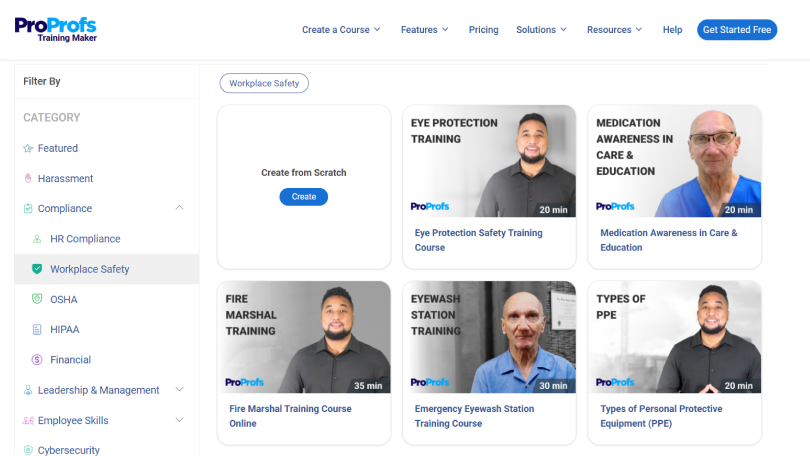
Benefits: Safety training reduces workplace accidents and promotes a culture of well-being. It ensures compliance with regulations and minimizes legal and financial risks.
8. Leadership & Management Training
This type of employee development training focuses on developing core leadership and management skills in the workforce. This staff training typically includes employee training topics such as communication, delegation, decision-making, and team building. The training is essential for new and experienced leaders, as it can help them build stronger relationships with their team members, improve organizational performance, and achieve business goals.
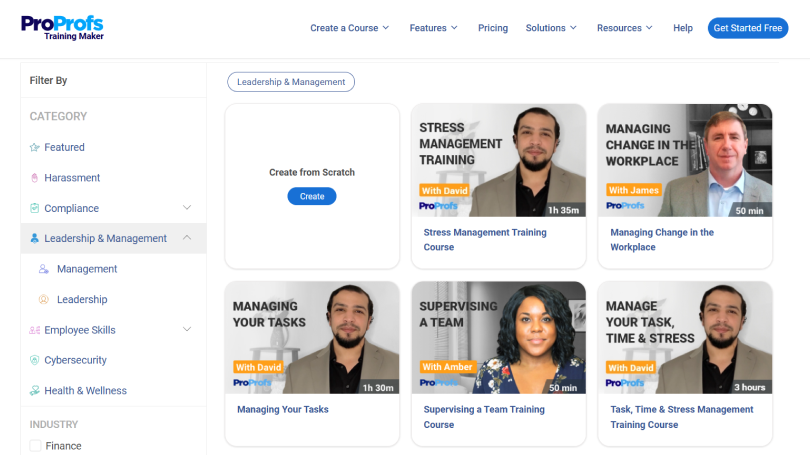
Benefits: Leadership and management training cultivates strong decision-making and enhances team performance. It fosters strategic thinking and improves employee engagement, driving organizational success.
9. Quality Assurance Training
Quality assurance (QA) training equips individuals with the necessary skills and knowledge to ensure that products or services meet specific quality standards. QA aims to prevent defects or errors and identify and resolve any issues arising during the development or production process. It is a standard program in software development, manufacturing, healthcare, automotive, aerospace, and pharmaceuticals.
Benefits: Quality assurance training ensures high product standards and minimizes errors. It boosts customer trust and satisfaction while optimizing operational efficiency.
10. Sales Training
Sales training improves sales professionals’ skills, knowledge, and techniques in selling products or services. This training may include product knowledge, communication skills, persuasion, and negotiation tactics, handling sales objections, nurturing sales leads, and closing sales. Some key benefits of this employee development training are increased sales revenue, improved customer satisfaction, better employee morale, and higher professionalism.
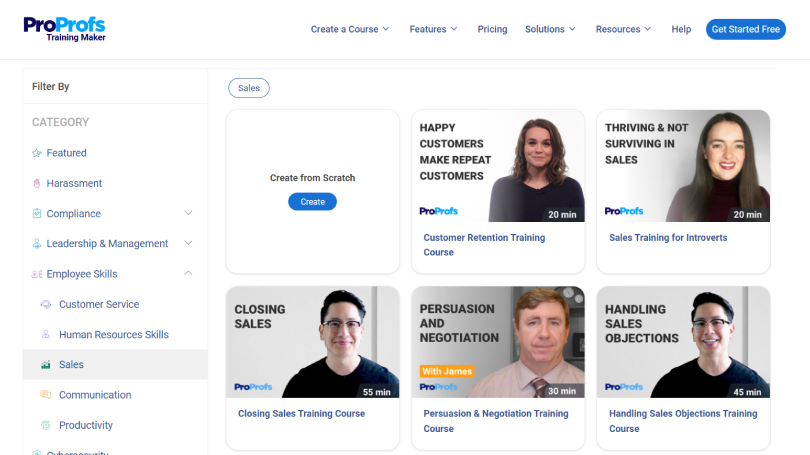
Benefits: Sales training boosts conversion rates by improving selling techniques. It enhances confidence, leading to stronger customer relationships and increased revenue.
11. Diversity, Equity & Inclusion Training
Organizations often provide diversity, equity, and inclusivity (DEI) training to their employees to promote a positive work environment. The training aims at building a more diverse, equitable, and inclusive workplace. It helps individuals and teams understand and appreciate the value of diversity, reduce bias and discrimination, and create a more welcoming and inclusive environment for everyone. DEI training is becoming increasingly important as more organizations recognize its role in reducing workplace conflicts.
Benefits: Diversity training fosters a more inclusive work environment and strengthens team collaboration. It helps reduce biases, improving decision-making and overall company culture.
12. HR Training
HR training involves developing and improving human resources professionals’ knowledge, skills, and expertise. This type of training usually covers topics such as recruitment, employee relations, performance management, and leadership development. Employee training in HRM aims to equip individuals with the necessary tools and knowledge to manage human resources within an organization effectively.
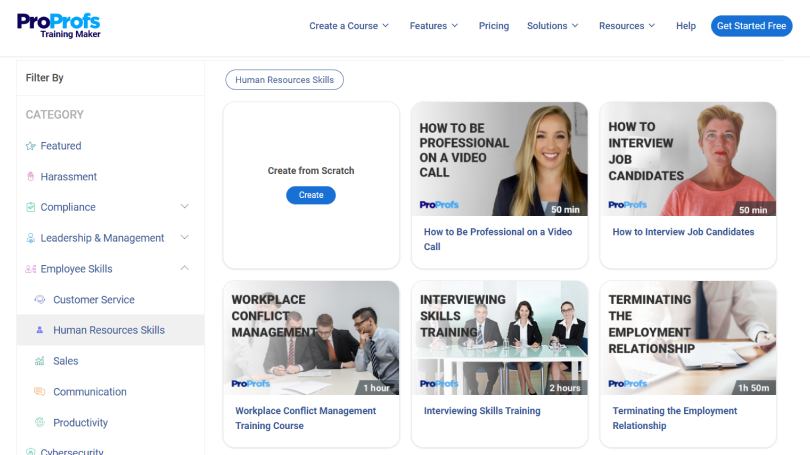
Benefits: DEI training fosters inclusive workplaces and improves team collaboration. It reduces biases, drives innovation, and enhances employee engagement and retention.
How to Build an Effective Employee Training Program
To start off, you must choose the right employee training software to build a training program. For instance, a cloud LMS, such as ProProfs Training Maker, can help with course creation, delivery, and tracking. Once you’ve created an account, log into it. This gives you access to the tools and resources you need to create and manage your training courses. After that, here are the steps you need to follow next:
Assess Needs
Identify the specific training needs of your organization. This involves understanding what skills or knowledge gaps exist and need to be addressed to meet your organization’s goals.
Define Objectives
To create a training program, set SMART learning objectives for each training module. These objectives should align with your organization’s goals and provide a roadmap for what the training aims to achieve. Meet your department heads at this stage and conduct surveys to pinpoint skills gaps. Engaging with those who will benefit from the training ensures the program is relevant and tailored to their needs.
P.S: If you’ve doubts about how to set SMART goals, don’t worry; here’s a course you can take for the same:
Start Creating the Materials (With Your Existing Docs or AI)
This is where the real work begins. You don’t need to start from scratch: repurpose your existing documents, presentations, or guides to create fresh, engaging employee training courses. If you need assistance, you can create a course with AI to help you quickly create professional, interactive training content.
My approach: “Make it clear, make it concise, and make it engaging.” Use various formats like videos, infographics, and case studies to keep the content diverse and appealing.
Add Assessments & Surveys
Assessments and surveys are critical to measuring the effectiveness of your training. Incorporate quizzes or tests to gauge knowledge retention and understanding. Surveys are equally valuable; they offer insights into how well the program meets learner needs and identifies areas for improvement.
Launch & Share Your Training Program
Once your training materials are ready, it’s time to roll them out to your team. Ensure the training is easy to access and provides clear instructions on participating.
Whether you share a link, embed your course on your website, or share it privately, you can customize the experience. You can send course links via email, share on social media, or even use QR codes for mobile access.
Monitor Your Learners’ Progress
Track your learners’ progress regularly. Monitor completion rates, quiz scores, and engagement levels to ensure your training objectives are met. This data helps you identify areas where learners might struggle and allows you to offer additional support or modify the content to improve effectiveness.
For more details on how to build engaging training programs, check out this resource.
Get Free Employee Training Software — All Features, Forever.
We've helped 567 companies train 200,000+ employees. Create courses in under a minute with our AI LMS or use 200+ ready-made courses on compliance, harassment, DEI, onboarding, and more!
What Are the Best Practices for Employee Training?
I have seen many organizations struggle to set up effective employee training programs, for one reason or the other. This often leads to confusion and underperformance. So, I’m sharing some of the best practices for employee training that can empower you to set up and run employee training correctly.
1. Use Relevant Examples
When designing employee training programs, try to use examples relevant to the employees’ roles. By using examples, employees can better understand various key concepts. They will also find the information more relatable, memorable, and applicable to real-world situations.
2. Involve Subject-Matter Experts
Taking the help of subject-matter experts in employee training design and delivery can help ensure that the training is accurate, relevant, and authoritative. Experts can provide valuable insights into industry trends, best practices, and emerging technologies.
3. Use Simulations
Simulations are a great way to provide hands-on experience and allow employees to practice new skills in a safe and controlled environment. Simulations can help employees learn faster and retain more information.
4. Use Research-Based Information
Training programs based on research and best practices are more likely to be effective. By using research-based information, employees can learn from the experiences of others and avoid common mistakes.
5. Incorporate Experiential Activities
Experiential activities, such as role-playing, group discussions, and team-building exercises, can help employees develop new skills and apply the knowledge practically.
6. Blend Delivery Methods
Incorporating different delivery methods, such as eLearning, classroom training, and on-the-job training, can help accommodate different learning styles and preferences.
7. Include Post-Training Activities
Post-training activities, such as follow-up coaching, assessments, performance evaluations, and refresher courses, can help reinforce learning and ensure that new skills and knowledge are applied in the workplace. This approach can also help identify areas where additional training may be needed.
How to Track Employee Training Progress
There are many ways to track employee progress, and I’ll share my way of doing it. I always use the IFF rule: Interaction, Feedback, and Follow-up to track employee training progress effectively.
Interaction measures how actively employees engage with the training content. Are they completing modules, participating in quizzes, or asking questions? High interaction rates signal strong engagement.
Feedback comes next. I gather insights from employees through surveys and direct conversations. Their input reveals whether the training meets their expectations and identifies areas for improvement.
Finally, follow-up ties it all together. Regular check-ins help ensure employees apply what they’ve learned to their daily tasks and highlight any skill gaps that may require additional focus.
These elements give a comprehensive view of each employee’s progress and the program’s overall success. It’s a simple yet effective way to ensure training remains aligned with organizational goals while empowering employees to excel.
How to Measure the Success of Employee Training Programs
Employee training evaluation is crucial and plays a vital role in measuring success. Start by checking if employees retain knowledge by using quizzes or assessments. Then, look at their performance on the job. Are they using those new skills effectively?
Don’t forget to ask them directly. Honest feedback through surveys or quick chats can reveal what worked and what didn’t. Keep an eye on key metrics: maybe it’s productivity, fewer mistakes, or even happier customers. If your training ties to specific goals, like boosting sales or improving team efficiency, compare the before-and-after results.
Lastly, think about the big picture. Does this training help with employee engagement or retention over time? By blending all these insights, you’ll know if your training is hitting the mark and what tweaks might improve it.
Get Free Employee Training Software — All Features, Forever.
We've helped 567 companies train 200,000+ employees. Create courses in under a minute with our AI LMS or use 200+ ready-made courses on compliance, harassment, DEI, onboarding, and more!
Deliver the Best Version of Employee Training
Employee training and development play a crucial role in any organization’s success. By investing in the growth of your workforce, you can increase productivity, job satisfaction, employee retention, and profitability.
Particularly, the types of training programs and the best practices you learned in this post will help you set up and execute professional, impactful, and measurable workplace learning initiatives.
With a robust cloud LMS, purpose-built courses, strategies, and ongoing support, you can expect significant returns from employee training.
The idea is to build a winning team that aligns its activities with your business goals.
If you need employee training software and relevant onboarding, skills, safety, compliance, HR, and sales courses, sign up today and start creating your training program!
 Tips
Tips
We’d love to hear your tips & suggestions on this article!
Get Free Employee Training Software — All Features, Forever.
We've helped 567 companies train 200,000+ employees. Create courses in under a minute with our AI LMS or use 200+ ready-made courses on compliance, harassment, DEI, onboarding, and more!


 We'd love your feedback!
We'd love your feedback! Thanks for your feedback!
Thanks for your feedback!







